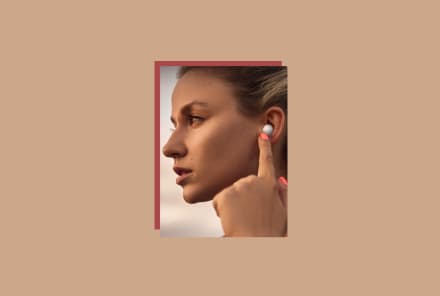Advertisement
Do Infrared Saunas Have Any Health Benefits? We Dive Into The Trend


Lately, more folks are sweating it out—but in not in a hot yoga or spin class, rather in an infrared sauna. Compared to traditional saunas, which use wood stoves or heaters to warm the air to high temps (think: 185 degrees F), infrared saunas—sometimes more specifically referred to as far-infrared saunas, aka FIRS—use light to warm sauna users directly, providing a deeply penetrating heat at a lower, more comfortable temperature (closer to 140 degrees F). And thanks in part to a slew of articles and celeb endorsements that highlight the infrared sauna and its purported benefits—Better skin! Improved circulation! Reduced inflammation!—this formerly niche trend is becoming more mainstream (especially with the introduction of infrared sauna blankets).
Hype aside, what can infrared saunas actually do for you and your health? Here's what some of that preliminary research says about four potential benefits of infrared saunas:
Pain relief.
One promising finding is that infrared saunas could help reduce pain for certain people.
In a small 2009 study, 17 patients with rheumatoid arthritis and 17 patients with ankylosing spondylitis (an inflammatory disease that can affect the spine) completed eight infrared sauna sessions over the course of four weeks. Results showed that during these sessions, patients experienced decreased pain and stiffness1 to a statistically significant degree. And, over the course of the four-week trial, the patients showed clinical improvements in pain, stiffness, and fatigue (though these improvements didn’t reach statistical significance).
Also promising: The study didn’t find any adverse effects from the infrared sauna sessions, and the sauna sessions didn’t exacerbate the patients’s diseases. These findings suggest infrared saunas are a feasible treatment for patients with inflammatory arthritis, though the authors note that folks should chat with their doctor before using infrared saunas for treatment and that more research on the topic involving bigger populations is definitely needed.
Post exercise recovery.
A very small 2015 study of 10 healthy, physically active men concluded that the deeply penetrating heat of a FIRS set at mild temperatures and light humidity are “favorable for the neuromuscular system to recover from maximal endurance performance2.” Translation: Infrared saunas could be used as a post workout recovery tool (among other methods) for athletes and other physically active folks. The authors also highlight the fact that FIRS provide a “comfortable and relaxing” experience.
Cardiovascular benefits.
A 2018 meta-analysis of seven studies concluded that infrared sauna sessions were associated with short‐term improvement in heart functioning for patients with heart failure. The authors note that more evidence is needed on the long‐term effects of both infrared saunas and traditional saunas on heart health for patients with heart failure or other heart-related diseases.
Skin health.
On the topic of skin health and infrared saunas, things are still pretty hazy. “My personal conclusion is that the effect of infrared on the skin is mixed,” says Jeremy Fenton, M.D., board-certified dermatologist, NYC-based medical director for Schweiger Dermatology Group, and clinical instructor at Mt. Sinai Hospital. “I can find information that supports that there are benefits to it, and I can also find information that supports that it is damaging to the skin.”
He describes some papers that discuss how infrared can promote the production of cell-signaling molecules and components that are involved in the breakdown of collagen, which suggests infrared could potentially3 be damaging to the skin. But at the same time, he describes other material that shows infrared can promote healing and collagen4, leading him to conclude there isn’t enough data to say whether or not infrared is helpful—or harmful—to the skin. Fenton attributes these seemingly conflicting results to the fact that different studies evaluate different types of infrared light. “Sometimes very low levels of certain types of energy can have one type of effect whereas high levels can have a different [effect],” he explains.
Mixed results aside, one thing folks seem to love about saunas in general (both infrared and traditional) is the fresh-faced, dewey look they induce. “People do feel like after being in a sauna that their skin has sort of like a nicer glow to it,” says Fenton. At the same time, “there are certain people who you may not get the [skin] benefits that they want from going into a sauna,” he adds, using the example of folks with rosacea. “When they go into the heat, they don't want that sort of rosy cheek glow.” But for the average person? “Maybe it's temporary, but it does give you a nice glow to the skin.”
Fenton’s ultimate conclusion: “I personally would not feel comfortable...going into an infrared sauna two or three times a week with the unknown about how it could really be affecting the skin,” he says, adding that he also wouldn’t fret about occasional use.
Types of infrared saunas.
One important nuance to note when you’re considering whether or not to board the infrared sauna train: Not all infrared saunas are the same, explains Brent A. Bauer, M.D., research director for the Integrative Medicine Program at Mayo Clinic. “Different saunas may have different outputs of infrared energy,” he says, adding that for now, it’s probably wise to follow the sauna manufacturer’s guidelines for use.
Another note: “Some consumer groups have raised concerns about exposure to Electromagnetic Fields (EMF) from infrared saunas,” he says. “Whether this is clinically significant or not is still being debated. Some manufacturers utilize low EMF technology and this may be a consideration for those seeking to purchase or utilize a sauna for a long duration.”
Risks and important caveats.
"In the few peer-reviewed articles on infrared saunas published to date, none have reported any serious adverse effects," says Bauer. That said, pregnant folks and kids should probably hold off on using infrared saunas for now, as there isn’t any reliable data on infrared’s effects on these populations, he adds. Lactating mothers might want to proceed with caution as well, as any harmful agents have the potential to enter breast milk; elderly individuals may also want to avoid a sauna session due to a higher susceptibility to dehydration.
Also, to Fenton’s earlier point, if you have a skin condition like rosacea that could be exacerbated by a sauna sesh (either infrared or traditional), you may want to skip the practice altogether.
The bottom line.
Limited research suggests infrared saunas may have a wide variety of benefits—from improved heart health to pain relief to post exercise recovery—while the full effect of infrared on the skin is seemingly unknown.
“We have some very intriguing, short-term, small trials that seem to suggest some possible benefit, but to really understand the risks and benefits, we need much larger clinical trials, done over much larger periods of time,” Bauer says. He adds that there’s not yet enough data from a medical perspective to recommend that anyone should use infrared saunas, though at the same time, he notes that the few peer-reviewed studies to date haven’t revealed any serious adverse effects, either.
So where does that leave us? Ultimately, we need bigger clinical trials conducted over longer periods of time in order to confirm results. So in the meantime, it’s really your call whether to embrace—or skip—the trend.
Watch Next
Enjoy some of our favorite clips from classes
Enjoy some of our favorite clips from classes
What Is Meditation?
Mindfulness/Spirituality | Light Watkins
Box Breathing
Mindfulness/Spirituality | Gwen Dittmar
What Breathwork Can Address
Mindfulness/Spirituality | Gwen Dittmar
The 8 Limbs of Yoga - What is Asana?
Yoga | Caley Alyssa
Two Standing Postures to Open Up Tight Hips
Yoga | Caley Alyssa
How Plants Can Optimize Athletic Performance
Nutrition | Rich Roll
What to Eat Before a Workout
Nutrition | Rich Roll
How Ayurveda Helps Us Navigate Modern Life
Nutrition | Sahara Rose
Messages About Love & Relationships
Love & Relationships | Esther Perel
Love Languages
Love & Relationships | Esther Perel











